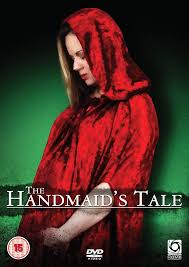
Introduction
‘The Handmaid’s Tale,’ the acclaimed dystopian novel by Margaret Atwood, has gained remarkable relevance in contemporary society. Originally published in 1985, this narrative explores themes of oppression, gender issues, and societal control, and resonates with ongoing discussions about women’s rights and personal freedoms. In recent years, the resurgence of interest in Atwood’s work, spurred by a successful television adaptation, has prompted reflections on its warnings regarding totalitarianism and gender equality.
Recent Events and Adaptations
The rise of political movements around the globe advocating for restrictive reproductive rights has made ‘The Handmaid’s Tale’ increasingly pertinent. Numerous activists have utilized the imagery and language from both the novel and its screen adaptation to demonstrate concerns over women’s autonomy and the potential regression of rights. The Hulu adaptation, launched in 2017, has also contributed to social discussions around the themes presented in Atwood’s work, gaining a significant following and critical acclaim.
In 2022, discussions surrounding the series intensified in the wake of the U.S. Supreme Court’s decision to overturn Roe v. Wade, which protected women’s rights to choose. Many viewed this decision as a catalyst that mirrored the oppressive regimes depicted in the series. Furthermore, protests against the ruling saw participants donning the iconic red gowns and white bonnets worn by the Handmaids, showcasing how art directly influences activism and social awareness.
Cultural Impact and Significance
‘The Handmaid’s Tale’ remains a powerful examination of society’s potential descent into authoritarianism under the guise of morality. The importance of this narrative lies not only in its gripping storyline but also in its ability to provoke thought and spur dialogue on pertinent issues. It serves as a reminder of the fragility of rights and freedoms.
In educational settings, Atwood’s novel is more frequently included in curriculums, prompting young readers to critically engage with its themes. As society continues to grapple with gender inequality and personal rights, the narratives within ‘The Handmaid’s Tale’ offer potent commentary. Its lessons serve as a cautionary tale about complacency and the importance of vigilance in protecting freedoms.
Conclusion
The narrative of ‘The Handmaid’s Tale’ is not just a fictional representation of a dystopian future but rather a reflection of the ongoing struggles faced by many. As discussions around gender and personal rights evolve, the significance of Atwood’s work becomes even more pronounced. The importance of engaging with such themes and learning from the past is crucial in preventing history from repeating itself. For readers and activists alike, the messages within ‘The Handmaid’s Tale’ continue to inspire action and contemplation.


